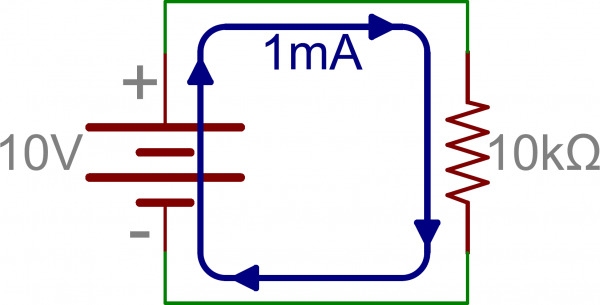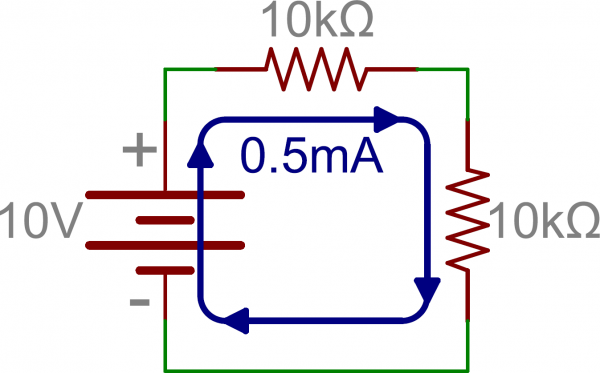Series and Parallel Circuits
Calculating Equivalent Resistances in Series Circuits
Here’s some information that may be of some more practical use to you. When we put resistors together like this, in series and parallel, we change the way current flows through them. For example, if we have a 10V supply across a 10kΩ resistor, Ohm’s law says we've got 1mA of current flowing.
If we then put another 10kΩ resistor in series with the first and leave the supply unchanged, we've cut the current in half because the resistance is doubled.
In other words, there's still only one path for current to take and we just made it even harder for current to flow. How much harder? 10kΩ + 10kΩ = 20kΩ. And, that’s how we calculate resistors in series -- just add their values.
To put this equation more generally: the total resistance of N -- some arbitrary number of -- resistors is their total sum.



